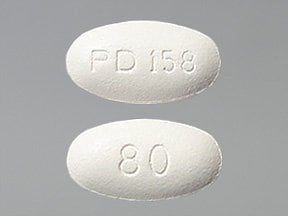What is Lipitor?
Lipitor is a prescription medication, with the active ingredient atorvastatin, that belongs to a class of drugs known as statins (or HMG-CoA reductase inhibitors). Its primary and most critical role is to manage blood cholesterol levels and, by doing so, to lower the risk of major cardiovascular events. It is prescribed for adults who have high cholesterol or who are at an elevated risk for developing heart disease. The medication works to decrease levels of low-density lipoprotein cholesterol (LDL-C), often referred to as “bad” cholesterol, as well as other harmful fats like triglycerides. Concurrently, it can help to modestly increase levels of high-density lipoprotein cholesterol (HDL-C), or “good” cholesterol.
The ultimate goal of Lipitor therapy extends beyond simply improving numbers on a lab report. Its most significant benefit, demonstrated in extensive clinical trials, is its ability to reduce the likelihood of heart attack, stroke, and the need for certain types of heart surgery in individuals with known heart disease or those with multiple risk factors (such as diabetes, high blood pressure, or a history of smoking). Lipitor is intended to be used as part of a comprehensive cardiovascular risk reduction plan that must also include a heart-healthy diet, regular physical activity, and weight management.
Mechanism of Action
Lipitor exerts its powerful effects by intervening directly in the body’s cholesterol production process, which predominantly occurs in the liver. The liver uses a specific enzyme, named HMG-CoA reductase, as a master catalyst in the complex pathway of synthesizing cholesterol. This enzyme is essential for one of the early, rate-limiting steps in this production chain.
Atorvastatin, the active component of Lipitor, is designed to specifically and competitively block the action of this HMG-CoA reductase enzyme. By inhibiting this key enzyme, Lipitor effectively slows down the liver’s internal manufacturing of cholesterol. In response to this reduced internal production, the liver cells sense a need for more cholesterol to carry out their normal functions. To acquire it, they increase the number of LDL receptors on their surfaces. These receptors act like magnets for LDL cholesterol circulating in the bloodstream. As more of these receptors become active, they pull a greater amount of LDL cholesterol out of the blood and into the liver for processing, which directly leads to a decrease in the overall level of “bad” cholesterol in the body.
To use an analogy, imagine the liver is a large-scale municipal water bottling plant. This plant has its own internal well and purification system (cholesterol synthesis) to create bottled water, controlled by a main valve (the HMG-CoA reductase enzyme). It also receives shipments of bottled water from trucks driving on the city’s highways (LDL cholesterol in the bloodstream). Lipitor does not interact with the trucks on the highway. Instead, it functions like a specialized regulatory key that is used to partially close the plant’s main production valve. This action significantly curtails the plant’s ability to produce its own bottled water. Faced with this internal shortage, the plant manager compensates by ordering the receiving department to open up many more loading docks (the LDL receptors) and actively wave in the delivery trucks from the highway to unload their cargo. This increased uptake from the highways effectively clears traffic and reduces the total amount of bottled water circulating throughout the city (lowering blood cholesterol levels).
Brand vs. Generic
Lipitor is the well-known brand name under which atorvastatin was originally developed, patented, and marketed by Pfizer. For many years, it was one of the best-selling drugs in the world, backed by extensive research that established its efficacy in reducing cardiovascular risk. After its patent protection expired, the U.S. Food and Drug Administration (FDA) and other global regulatory bodies approved the production and sale of generic atorvastatin.
These generic versions contain the exact same active ingredient, atorvastatin calcium, in the same available strengths as brand-name Lipitor. They are required to meet identical, rigorous standards for quality, potency, and bioequivalence, ensuring they provide the same clinical benefits and have the same safety profile. The advent of generic atorvastatin has made this vital cholesterol-lowering therapy substantially more affordable and accessible to a wider population.
Available Forms
Lipitor and its generic atorvastatin counterparts are supplied as oral tablets for once-daily administration. This convenient dosing schedule helps with patient adherence to long-term therapy. The tablets are available in four distinct strengths, allowing physicians to tailor the treatment to an individual’s specific cholesterol-lowering needs and risk profile:
- 10 mg tablets
- 20 mg tablets
- 40 mg tablets
- 80 mg tablets
Unlike some older statins, Lipitor can be taken at any time of the day, with or without food, due to its long duration of action in the body.
Unique Features
Lipitor (atorvastatin) is distinguished by several key attributes that have solidified its role in cardiovascular medicine:
- High-Intensity Statin Potency: Atorvastatin is classified as a high-intensity statin, meaning that at its higher doses (40 mg and 80 mg), it is capable of producing a very substantial reduction in LDL cholesterol, often lowering it by 50% or more. This potency is crucial for patients with very high baseline cholesterol or those at very high risk of cardiovascular events.
- Proven Reduction in Cardiovascular Events: The primary value and unique selling proposition of Lipitor are not just its cholesterol-lowering ability but its extensive and robust clinical trial data. Landmark studies have proven that it significantly reduces the incidence of heart attacks, strokes, and certain cardiovascular procedures, making it a cornerstone of preventative cardiology.
- Dosing Convenience and Adherence: The long half-life of atorvastatin allows for flexible once-daily dosing at any time of day. This contrasts with some earlier statins that were more effective when taken in the evening and offers a practical advantage that can improve a patient’s ability to consistently take their medication as prescribed.


